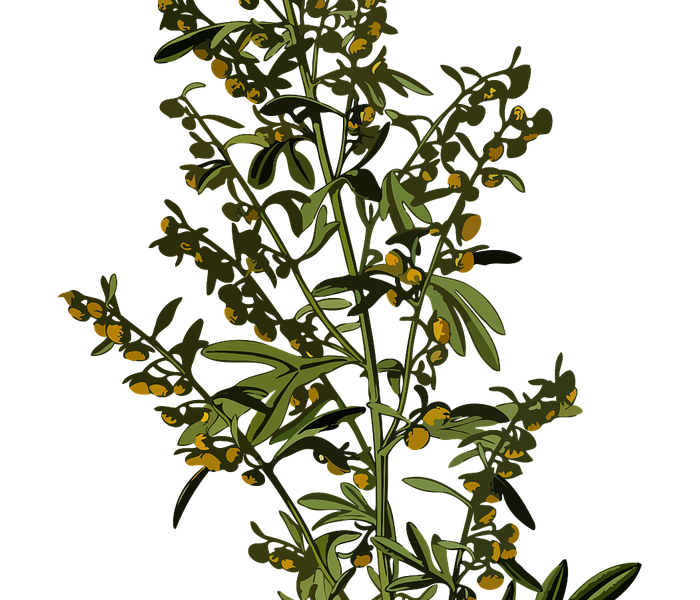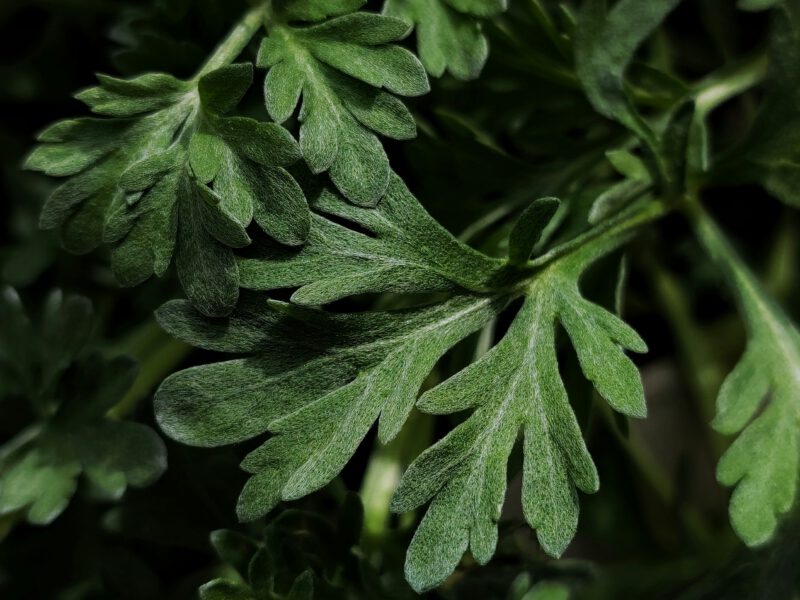wormwood - Artemisia absinthium


Active Ingredients
Thujone (high level can be toxic), absinthin, artemisinin, flavonoids and tannins
Description
Wormwood typically grows to a height of about 0.8 to 1.2 meters (2.5 to 4 feet). The leaves are alternate, grayish-green, and covered with fine silvery-white hairs, giving them a fuzzy or velvety appearance. They are deeply lobed and have a distinct aromatic fragrance. The stems are rigid, branched, and often have a reddish or purplish tint.
Wormwood produces small, yellow-green flowers that are arranged in panicles or spikes. The flowers are not typically showy but contribute to the overall appearance of the plant.
It thrives in areas with well-drained, poor, and sandy soils. It is often found along roadsides, in meadows, and on hillsides. Wormwood typically blooms in mid to late summer. Native to Europe, Asia, and parts of Northern Africa, it has also become naturalized in other regions.
What can you use if for?
• The leaves and the flowering top can be used to strengthen and stimulate the immune system.
• It has been proven to reduce fever.
• Improves menstruation and reduces it’s pain.
• Improving appetite.
• prevents vomiting
• It also helps with digesting your food.
• Can be used as an anthelmintic (remedy against worming).
How to use it?
INTERNAL
Infusion: put 5 grams of flowering tops in 1 liter of boiling water. Drink 2 cups a day and drink one in the morning on an empty stomach if the intended use is to cure worming and use for 4-5 days.
Powder: Dry the plant and turn it into a powder. Add 3 grams in a hot drink to reduce fever or as an anthelmintic. use a sweetener to reduce bitterness if needed.